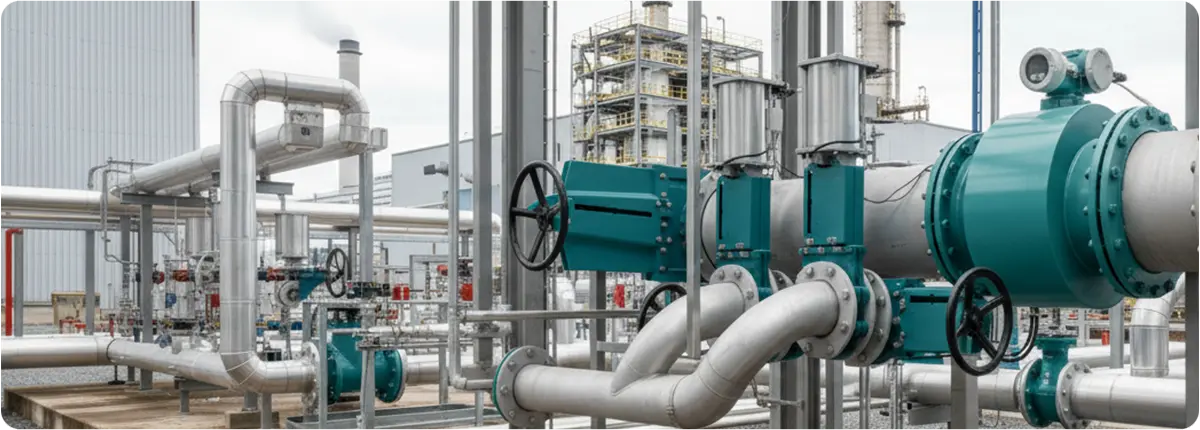Pump and valve systems are at the core of industrial and municipal operations, from water distribution and wastewater treatment to oil refining and power generation. While these systems ensure reliable fluid transport and process control, they also account for a significant portion of global electricity consumption. According to the International Energy Agency (IEA), pumps alone represent 10–15% of global electricity usage, and industrial facilities dedicate 20–30% of their total electricity consumption to pumping processes.
This substantial energy demand presents both a challenge and an opportunity: improving pump and valve system efficiency can save billions in electricity costs while significantly reducing carbon emissions.

GLOBAL SHARE OF ENERGY CONSUMPTION
- Industrial perspective: Pumps represent 25–40% of motor-driven electricity use in chemicals, pulp & paper, and mining sectors.
- Municipal water and wastewater: Approximately 50% of operational costs in wastewater plants come from pumping.
- Overall impact: If pumps globally operated at optimum efficiency, global electricity demand could drop by 4–5%, equivalent to the output of 200–250 nuclear power plants.
PUMP POWER CALCULATION
P = (Q × H × ρ × g) / η
- P = Pump power (W)
- Q = Flow rate (m³/s)
- H = Pump head (m)
- ρ = Fluid density (kg/m³)
- g = Acceleration due to gravity (9.81 m/s²)
- η = Overall pump and motor efficiency
ENERGY LOSSES IN PUMP AND VALVE SYSTEMS
- Incorrect pump sizing leading to low-efficiency partial-load operation.
- Flow throttling with valves causing unnecessary pressure losses.
- Poor pipeline design with excessive bends, small diameters, or rough surfaces.
- Lack of maintenance such as worn impellers, clogged filters, or leaking valves.
ROLE OF VALVES IN ENERGY EFFICIENCY
- Control valves with high pressure drop increase pump workload.
- Check valves prevent reverse flow and reduce energy losses.
- Smart valves with positioners enable optimized flow control, saving up to 10–15% energy.
STRATEGIES TO IMPROVE EFFICIENCY
- Proper pump selection to match actual system demand.
- Use of variable frequency drives (VFDs) for optimal pump speed control.
- Hydraulic optimization including proper pipe sizing and reduced pressure drops.
- Regular maintenance such as impeller cleaning and valve seat replacement.
- Digital monitoring with IoT sensors and digital twins for real-time performance tracking.
ENERGY CONSUMPTION DISTRIBUTION (TYPICAL)
- Pump hydraulic inefficiency: 20–30%
- Motor inefficiency: 5–10%
- Throttling via valves: 10–20%
- Pipeline friction losses: 10–15%
- Other operational factors: 5–10%
POTENTIAL GLOBAL BENEFITS
- Economic savings exceeding $50 billion annually with high-efficiency systems.
- Environmental impact: more than 1 gigaton of CO₂ reduction per year.
- Operational reliability through reduced wear and extended equipment life.
CONCLUSION
Pump and valve systems offer one of the largest opportunities for improving industrial energy efficiency. Through smart pump selection, efficient valve design, and advanced digital monitoring, industries can significantly reduce electricity consumption, cut operational costs, and support global sustainability objectives.
